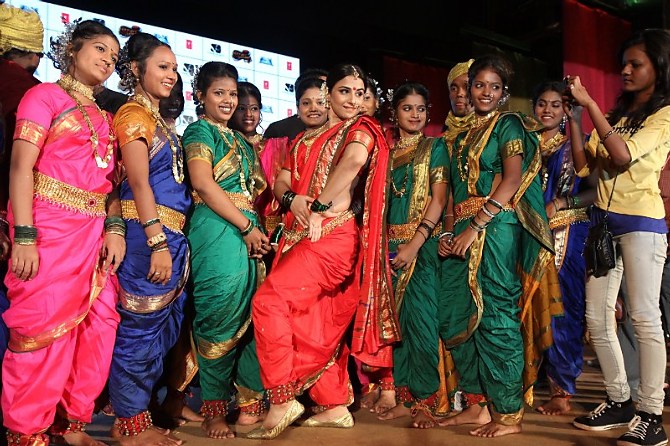
The Elegance of Nauvari Sarees
Introduction
People across India are completely immersed in the festive mood of Ganesh Chaturthi. They have already installed the idols of Lord Ganesha in their homes, temples and pandals amidst the loud chants of “Ganapati Bappa Morya”. Especially in Maharashtra, this auspicious occasion is celebrated on a large scale with a lot of zeal and enthusiasm. You will see most of the Marathi women dressed in their traditional attires, popularly known as ‘Nauvari’. Finely dressed in their traditional sarees along with some attractive gold ornaments, these women celebrate the festival of their favorite god with fervor and devotion.
Origin and History
The Nauvari saree, which means Nine Yards, has a historical milieu. It is said that during the Maratha rule, women were entrusted to help their fellow male warriors. To facilitate easy movement, Maharashtrian women introduced the Nauvari saree which resembled a male trouser. Since then, it has become the traditional attire for women in Maharashtra. Wearing it reminds them of their competency in the male dominated society and equal stature in the bygone days, even during difficult times.
Cultural Importance of Nauvari sarees
The Nauvari saree is a stunning attire that is mostly worn by the Maharashtrian brides for their wedding ceremonies. It is typically draped in a traditional style that makes the brides look gorgeous and suave. You can see several women wearing Nauvari sarees during major festivals such as Ganesh Chaturthi and Gudi Padwa in Maharashtra.
Steps to drape a Nauvari Saree in a traditional way:
While draping a Nauvari saree, you do not need any petticoat or slip. These sarees are mostly available in cotton and are very easy to carry off, even if you are wearing them for the first time.
- First of all, wear a pair of tight slacks and tie a centre knot right below the navel to secure the pleats, leaving about a meter of length on your left.
- Take the pallu of the saree on the left shoulder, wrap it and bring it to the right end of your shoulder.
- Now, with the remaining part of saree, start making pleats of 4-5 inches. Pass all the pleats through both the legs from the front to the back.
- Re-fold the pleats, pull them neatly and tuck them in at the mid-riff.
- Bring the remaining of the pleated saree and let it come towards your front side by wrapping it around the right side of your waist. Fold the portion of the saree that is near the feet in a layer and tuck into your waist so that it looks like a dhoti pants from the front.
Variety and Designs
The Nauvari sarees are available in different varieties and designs. Initially they were made from cotton, but now they are easily available in other fabrics as well, including silk and satin. These traditional nauvari sarees are embellished with attractive floral prints and are beautifully designed with motifs and patterns. One can complement this saree with 3/4th sleeves or even sleeveless blouses to create a stunningly fusion look.
For her wedding, a Maharashtrian bride can select Nauvari sarees made up of Paithani silk. This smooth fabric is often available in golden color which would be a perfect choice for the Maharashtrian bride. Moreover, a silk Nauvari saree is famous for its thick patterned border that is mostly embroidered with either a silver or golden thread. With a wide-spread availability of pre-stitched Nauvri sarees, it becomes really easy for you to pick and choose your favorite one this festive season.
Interesting facts:
- Nauvari saree is considered to be one of the most popular dresses of Maharastrian women.
- Women can be seen wearing Nauvari sarees during festivals and represent the age-old tradition of the state.
References:
Categories: Clothing Styles & Drapes

